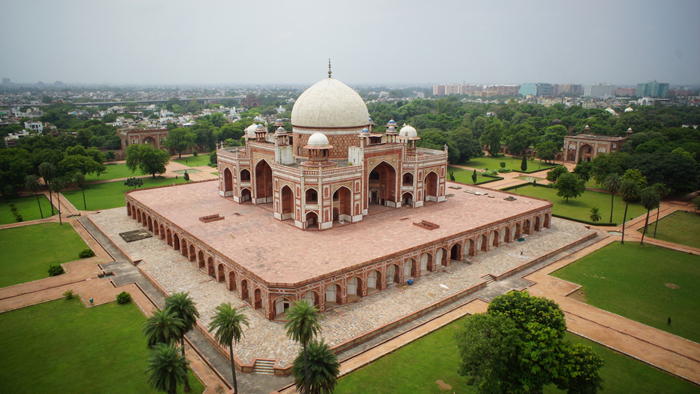Humayun’s Tomb: A Timeless Marvel of Mughal Architecture
Nestled in the heart of Delhi, Humayun’s Tomb is not only a magnificent architectural masterpiece but also a significant milestone in the history of Mughal architecture in India. Commissioned in 1565 by Humayun’s widow, Empress Bega Begum (also known as Haji Begum), this UNESCO World Heritage Site is the first garden-tomb on the Indian subcontinent and served as a major inspiration for later Mughal architecture, including the famed Taj Mahal.
Historical Significance
Humayun, the second emperor of the Mughal Empire, ruled between 1530 and 1540, and again from 1555 until his untimely death in 1556. After his passing, Empress Bega Begum was deeply affected and decided to honor his memory with a grand mausoleum. She personally commissioned the construction and chose a Persian architect, Mirak Mirza Ghiyas, to design the tomb. The construction began in 1565 and was completed in 1572, nearly 15 years after Humayun’s death.
This mausoleum marked a departure from the simple burial sites of previous rulers, bringing Persian and Indian architectural elements together to create a majestic resting place worthy of an emperor.
Architectural Grandeur
Humayun’s Tomb is often considered the precursor to the Taj Mahal due to its symmetrical design and garden layout. It was the first structure in India to use red sandstone on such a grand scale, setting the trend for future Mughal buildings.
The tomb stands on a high platform and is surrounded by Charbagh-style Persian gardens, divided into four main quadrants by walkways and water channels. The main building is octagonal in shape and crowned with a white marble dome, which rises 42.5 meters above the base. The use of white marble in contrast with the red sandstone gives the structure a striking visual appeal.
Inside, the central chamber holds the cenotaph of Emperor Humayun, while the actual grave lies in a crypt below. Surrounding the main tomb are smaller chambers containing the graves of various members of the Mughal family, making it a true dynastic mausoleum.
The Charbagh Garden Layout
One of the most striking features of Humayun’s Tomb is its garden layout. The Charbagh concept, inspired by Persian gardens, symbolizes the Garden of Paradise described in the Quran. It consists of four squares separated by water channels and walkways, a design intended to represent the four rivers of paradise. The water channels not only added to the aesthetics but also played a practical role in cooling the surroundings and nourishing the flora.
This garden layout was innovative at the time and became a defining feature of later Mughal architecture, including the Taj Mahal.
Restoration and Preservation
Over the centuries, Humayun’s Tomb suffered from neglect, especially during the colonial era. However, it gained recognition and protection during British rule and underwent several phases of restoration. In the early 20th century, Lord Curzon initiated some of the first major restoration efforts.
In the 1990s and early 2000s, the Aga Khan Trust for Culture collaborated with the Archaeological Survey of India (ASI) to restore the site to its former glory. Their efforts included restoring the gardens, pathways, and water channels, and cleaning the intricate stonework. These efforts played a crucial role in preserving the tomb as an outstanding example of Indo-Islamic architecture.
UNESCO World Heritage Site
In 1993, Humayun’s Tomb was declared a UNESCO World Heritage Site for its cultural and historical importance. Its recognition brought global attention and further funding for conservation. Today, the site is one of Delhi’s most visited monuments and an essential stop for anyone interested in history, architecture, or Mughal heritage.
